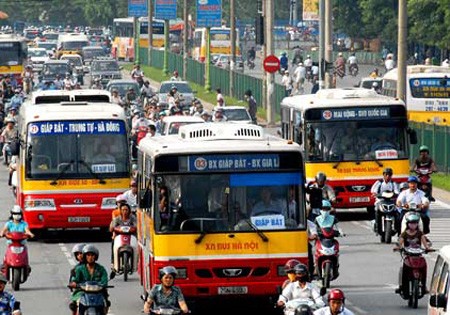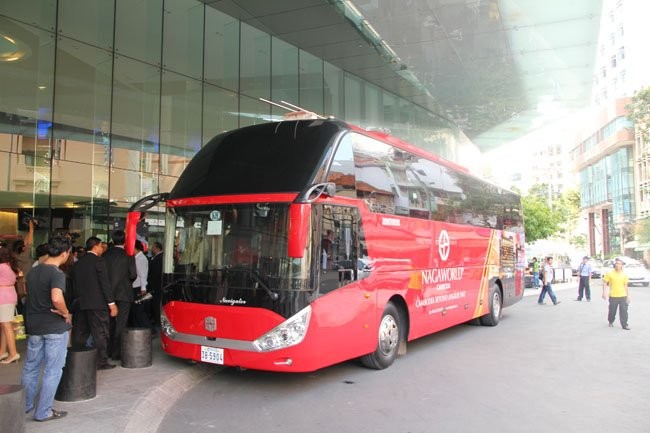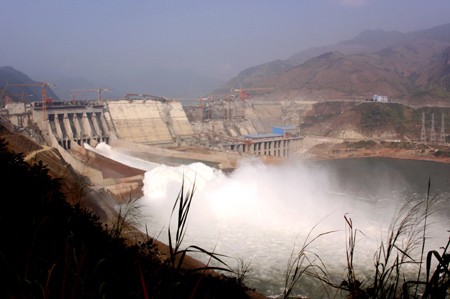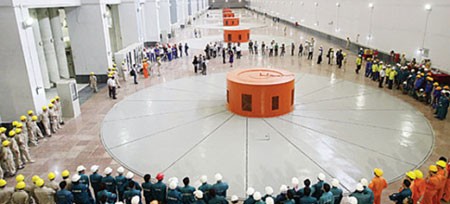(VOVworld) - Summer is the peak holiday season in Vietnam when Vietnamese and foreign tourists love to spend their vacation at one of the beautiful beaches and comfortable resorts that stretch from the northern to central coast. Tours to mountains and forests in the northern provinces or Central Highlands are also attractive to those who love trekking, panoramic views, mysterious tropical forests, wilderness camping, and home stays in the modest houses of ethnic people.
B: Foreigners preparing to visit Vietnam frequently ask about transportation. We have some suggestions for getting around. This is in response to a question from Indian listener Jayanta Chakrabarty about public transportation in Vietnam and the new metro system currently under construction. He says he heard that public buses are cheap and efficient.

Buses in Hanoi
|
A: Vietnam has an extensive network of low-cost buses that reach every remote corner of the country. Foreigners often ride these buses, which have fixed-price tickets sold at most bus stations. Bus fleets are being constantly upgraded. Local route buses in the city run every 15 minutes from 5.30 a.m to 9.30 p.m. Tickets cost around 25 cents for one transit. The buses are often packed with people during morning and afternoon rush hours.
 |
A luxuary tourist bus from Ho Chi Minh city, Vietnam to Phnom Penh,, Cambodia
|
B: On most long, popular routes, modern imported buses with air-conditioners and comfortable seats are the rule. Jayanta also asked about the construction of Ho Chi Minh City’s new Metro Line. The 20-km line, which began construction in late 2012, will cost more than 820 million dollars, of which 83 will come from Japanese official development assistance. Metro Line No.1 is expected to be finished and in operation by early 2018. It will become the backbone of public transportation in HCM City, carrying approximately 620,000 passengers a day by 2020.
A: Trains are another popular means of transportation from province to province. The north-south railway runs from Hanoi to Ho Chi Minh city. There are also rail lines through the northern mountain provinces and the southern Mekong Delta provinces.
B: Now, let’s read some other listeners’ letters and reception reports on our program contents and signal quality, and most interestingly, their feelings about VOV. From Nigeria, Sanusi Isah Dankaba, wrote: “I enjoy listening to VOV very much. I always find the programs interesting and informative. The presenters always speak very clear and at a steady pace. The only problem I have is that I find it hard to understand Vietnamese personal names. I’ve been a shortwave radio listener to VOV for many years. I thoroughly enjoy your programs in English and I tune in almost every morning. I love hearing about news events and Vietnamese history and culture. Radio the Voice of Vietnam over the years has given me real insight.”
A: Thank you, Sanusi, for your compliments on our presenters and programs. Catching the Vietnamese names of people and places is a common problem for foreign Dx’ers. We’ll try to pronounce the Vietnamese names more clearly. You can also visit to our website to read broadcast transcripts and see how the Vietnamese names are written. Anton Kolokov, a journalist in Crimea, emailed us on May 19. He said he is a great fan of VOV and our programs have inspired him a lot.
B: We’ll send you some VOV souvenirs and our frequency list to make it easier for you to catch our broadcasts. Here I have some happy news from Bangladesh. Rajib Kumar Mondal emailed us saying that his club has opened a Bangladesh VOV Listeners Club. Rajib Kumar Mondal is the Club’s director and his deputy is Sharat Chandra Mondal. The club has 35 members including 15 women. They regularly listen to VOV’s English program together. Rajib said they will recruit more listeners and send feedback to VOV.
A: Thank you, Bangladeshi. We sincerely appreciate your effort in opening the Bangladesh VOV Listeners Club. We’ll send some gifts for your new members. S.B Sharma , a member of the SBS World Listener Club of India, said he was interested in a report on last Saturday’s program about a photo exhibition to raise money to buy blankets for children in mountain regions. The exhibition has attracted a large number of photographers, artists, and art-lovers.
B: Our regular listener Pak Ning Tjang of Indonesia says he tuned in to VOV’s Chinese program on May 15. The reception was not very good because the broadcast is beamed to the China mainland. Pak, we’ll forward your reception report to our Chinese section for verification. We trust you’ll get their reply soon.
A: This week we acknowledge an email from Enzo Pistone of Italy. He reported listening to our program on May 8 at 17:00 UTC on the frequency of 9625 khz. He used a PLL all-band Radio Shack Realistic DX 392. It has a digital frequency display and a telescopic antenna. SINPO rating was at 55434.
B: Here I have a letter from Kevin Loughlin of New Zealand, who expressed his interest in working for VOV’s English language section in Hanoi. He attached his broadcasting credentials, which show experience as a journalist, news anchor, and program presenter in Australia, Canada, and New Zealand. We’ll forward your letter to our boss and hope we’ll have an answer by the time of your planned trip to Hanoi at the beginning of July.
A: We’ll spend the last few minutes of the Letter Box today talking about Vietnam’s largest dam in response to Muhamad Shamim of India. Sơn La Dam, a concrete gravity dam on the Đà river in Son La province, is the largest hydroelectric power station in Southeast Asia. The construction of the dam began in December 2005 and the first turbine was connected to the power grid 5 years later. It was officially put into full operation in January 2011.
 |
| Son La hydropower plant |
B: Four turbines were in operation in 2011 and two more turbines were added in 2012. The dam is 138 metres high and 90 metres wide. Its length is over 1 km. The power plant’s six turbines generate a total capacity of 2,400 MW. The total cost of the project was US$2 billion. The plant was designed in coolaboration collaboration with Russia and built by the Vietnam Electricity Group.
 |
Son La hydropower plant has 6 turbines which generate a total capacity of 2,400 MW
|
A: We want to thank you all for listening and sending us your feedback. We welcome your letters at: English section, Overseas Service, Radio Voice of Vietnam, 45 Ba Trieu Street, Hanoi, Vietnam. Or you can email us at: englishsection@vov.org.vn. You’re invited to visit us online at www.vovworld.vn, where you can hear both live and recorded programs. Good bye until next time.